One place that we did not want to miss on our grand summer tour of Colorado is Black Canyon of the Gunnison National Park. Although this park seems to be one of the lesser-known national parks – perhaps because it was only upgraded from a National Monument to a National Park in 1999 – we had received several recommendations to visit. It turned out to be just as impressive as other more famous national parks.
Black Canyon of the Gunnison
The key words to describe this river-carved canyon are steep, deep, and narrow. Whereas the views across the Grand Canyon in Arizona span several miles, at points the two rims of the Black Canyon are only 1,100 feet apart, while the canyon is several thousand feet deep. Many of the views involve looking almost straight down, which is more than a little disorienting.
A major reason for the depth of the canyon is that the pitch of the river is quite steep, making the Gunnison something of a cross between a river and a waterfall as it traverses the Black Canyon. The large volume of fast-moving water has scoured a narrow river channel that at its narrowest point is a mere 40 feet wide at the bottom, surrounded by nearly vertical cliffs full of rocky spires.
The canyon walls are made of ancient black rocks uplifted from the Earth’s basement, and they are shot through with veins of pegmatite – magma that entered fissures in the rocks hundreds of millions of years ago and precipitated out minerals to create distinctive pink patterns. The Painted Wall is 2,300 feet high and offers some of the best views of the grand scale of these patterns in the rock.
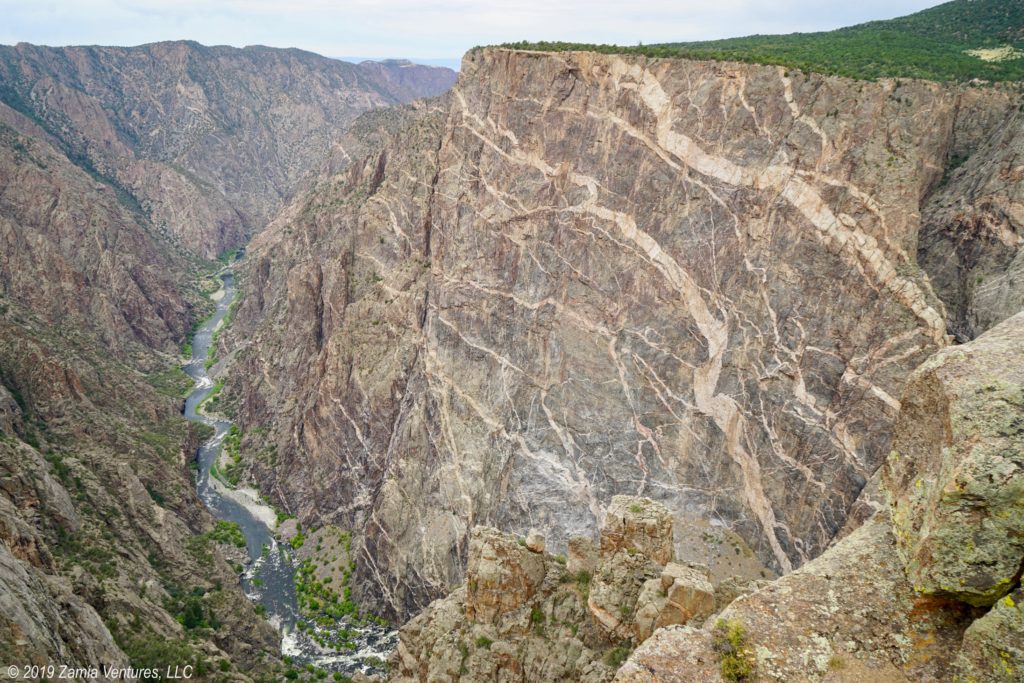
One day we did a loop hike from the campground along the rim out to the visitor center, down about 400 feet into the canyon, and back along an interior route on the Rim Rock, Oak Flat, and Uplands trails. For the amount of effort involved in getting down and then up the steep canyon sides, the views from the Oak Flat loop were pretty meh; we skipped this section when we hiked the area again. Another day we drove along the park’s scenic drive and stopped at each of the dozen overlooks. Most of these involved walking several hundred yards out along the top of pegmatite fins to get dramatic panoramic views over the canyon. Between all the overlook walks and the 1.5 mile Warner Point Trail at the very end of the scenic drive, we got in plenty of steps on the day we decided to “only” do the scenic drive.
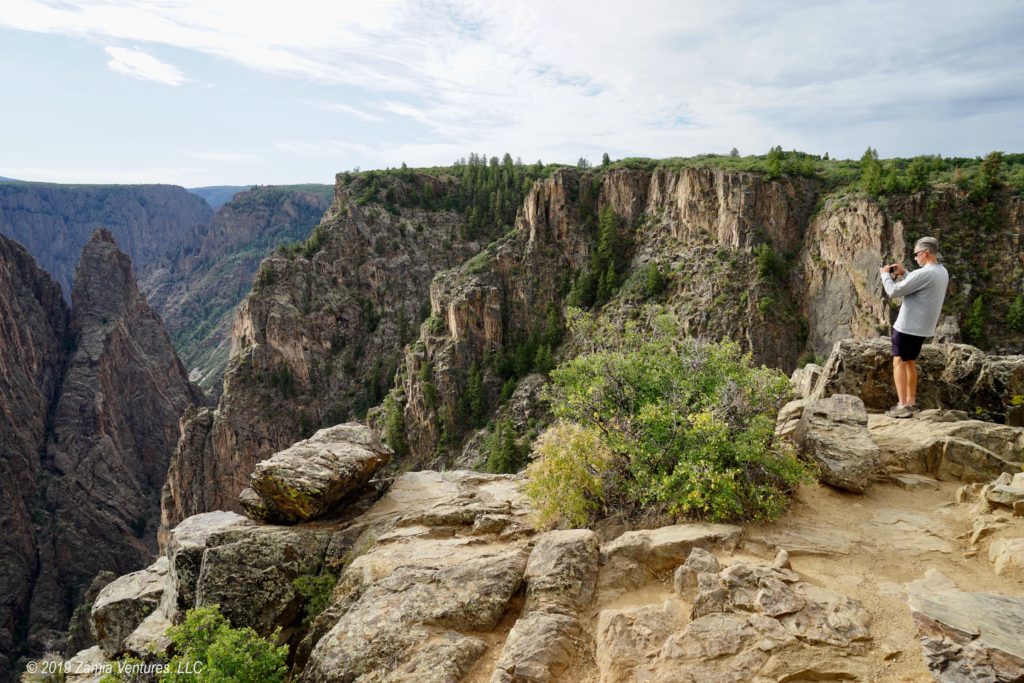
When not gazing into the canyon, we appreciated the arid environment atop the plateau. Gambel oaks, piñon pines, and Utah junipers dominated the wooded areas while open spots were full of sagebrush getting ready to bloom. The campground has nicely spaced out spots, and it was filled with deer. In fact, the deer are so comfortable in the campground that we faced stern warnings in the park newspaper and on placards on the picnic tables about aggressive deer that have lost their fear of humans. While we saw deer coming through the campground daily, barely glancing at us while they sauntered through in broad daylight, I am happy to report that we will not be featured on the next installment of “When Deer Attack.”
Dark Skies
For us, much of the fun of this park was happening after dark. Black Canyon of the Gunnison is part of the International Dark-Sky Association (IDA), an organization devoted to preserving our night skies, and since our visit coincided with new moon and featured mostly clear skies we had perfect conditions for stargazing. Coming from the East Coast, we spent years saddled with terrible light pollution. People living in densely populated areas like South Florida typically see only a tiny fraction of the night sky, since faint starlight is drowned out by all the ambient light cast upward by streetlights, landscape lights, parking lot flood lights, commercial signs, and the spillage out of the windows of homes and offices. As this map from an NPS page on dark skies shows, large urban areas create huge hot spots of light that are easily visible from space.
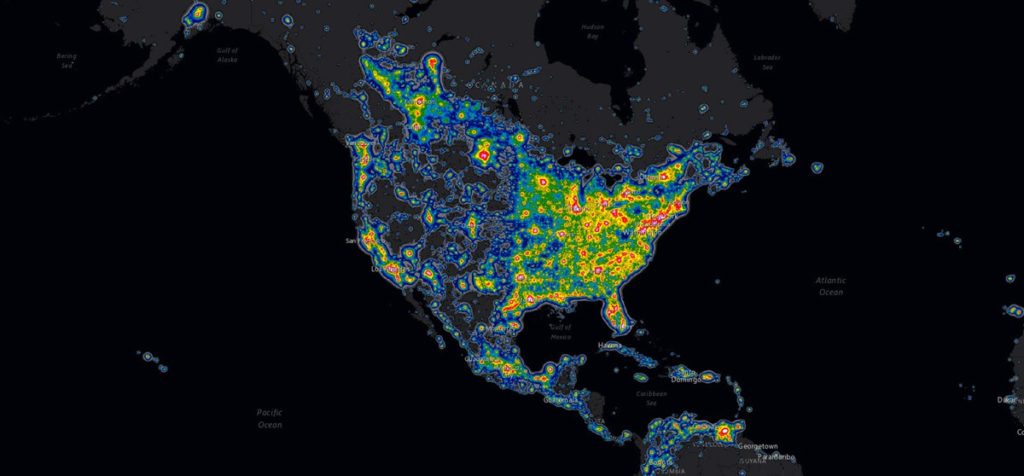
Even some remote places in the west are losing the battle with light pollution. During our visit last summer to Teddy Roosevelt National Park in North Dakota we learned that the perpetually-burning flares from thousands of gas wells in the area of the Bakken shale formation have considerably diminished the darkness of the park’s skies, damaging one of its important wild resources. At first it’s hard to conceptualize how the absence of light can be a resource, but I think the photos speak for themselves.
Spending time in the west, in some of the places that are really dark on the map, has given us the opportunity to see the skies as our pre-industrial ancestors did – with little interference from artificial light. IDA members like Black Canyon use several tools to preserve dark night skies such as limiting artificial light at night to relatively dim safety lights and having all lights point down with shades on the sides to keep the light contained to a directed area. Based on the brilliant night skies we enjoyed during our stay, these techniques certainly help. One surprising downside: it’s hard to find familiar constellations in truly dark skies because there are just so many stars. Here’s an example using a close up of the portion of the sky with Orion, one of the most recognizable constellations of all.
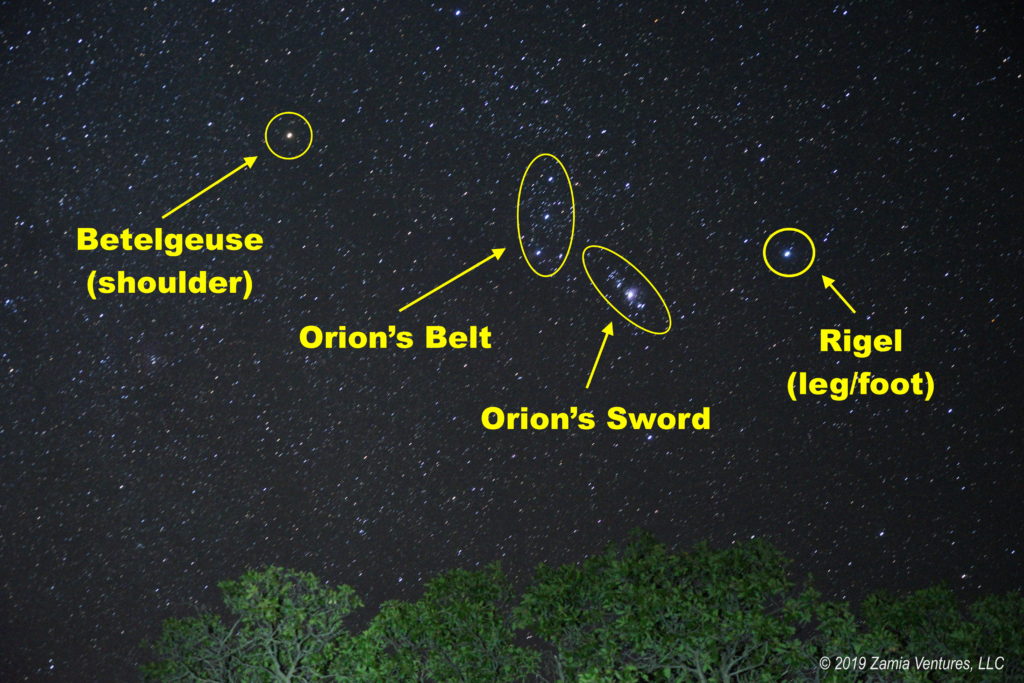
The excellent sky conditions provided the perfect opportunity to enjoy the stars and work on my night photography skills. Armed with our planispheres, the helpful SkyView iPhone app, an LED headlamp that makes both red light and white light, my trusty tripod, and a new guide book that I picked up from the park visitor center, I spent several nighttime hours outside the trailer improving my technique. Normally when taking photos I let my very smart camera just select its own settings and it does a great job. But in the pitch-black darkness of the new moon, all the automatic functions flail around aimlessly so everything from focus to exposure to white balance must be set manually – often by manipulating the camera in the dark by feel alone. I owe major props to the book Photography Night Sky by Jennifer Wu and James Martin (Amazon link), because they really helped me elevate my night photography game. With good guidance and plenty of trial and error I think I am finally getting the hang of this.
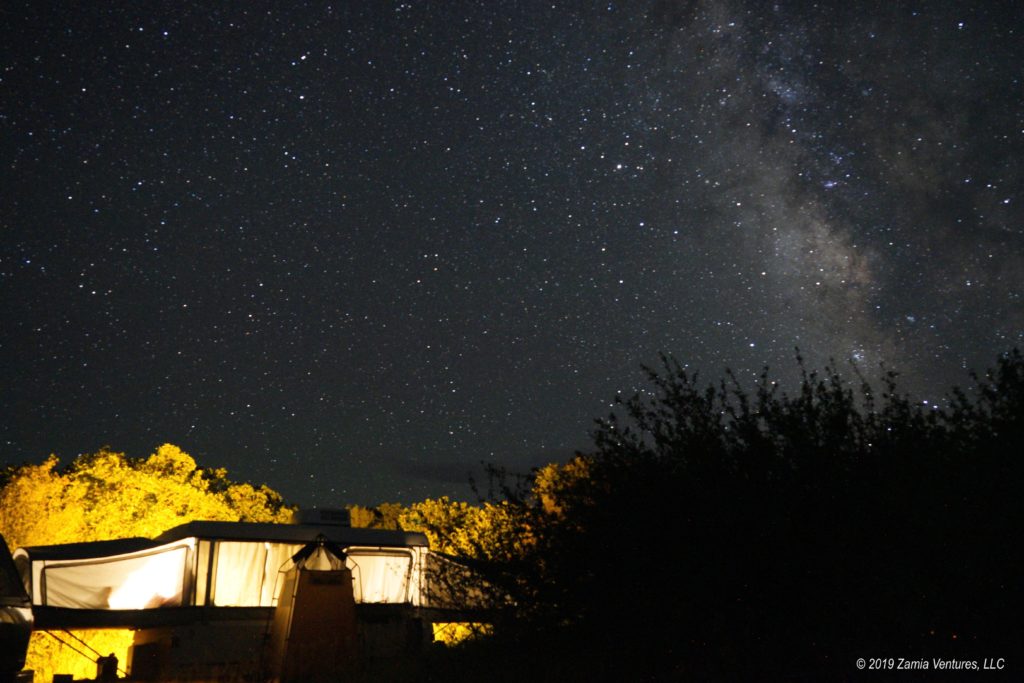
Now that I am happier with the results I am getting from these efforts, it will finally be worthwhile to take the show on the road and leave the campground at night. Although part of me is curious whether I can actually break Instagram by posting nothing but photos of our Airstream under starry skies, it’s time to find some new subjects. I am hoping that our next new moon in one month will find us in a location that will provide some interesting natural silhouettes like trees or rock formations.
Montrose
Our 10-day stay at Black Canyon was significantly longer than the time we needed to visit this relatively small park, but when booking this stay we didn’t want to try to relocate in the middle of Labor Day weekend so we extended our stay well past the end of the holiday. Luckily the town of Montrose is only 15 miles away from the national park. As one of the larger communities in western Colorado, Montrose proved to be a perfect place to get haircuts, refill propane, replenish household supplies, and otherwise take care of normal life tasks by visiting the chain stores we know and love on a leisurely schedule. During one of our trips into town we checked out one of the local breweries, Horsefly Brewing. The beer was good, and we particularly liked the lovely shaded outdoor patio area which overlooks Main Street.
The South Rim Campground in this national park is one of the few NPS campgrounds with electric service, and with electricity we could turn on all our devices and discovered we even had over-the-air TV service. As a result we were able to perform our sacred duty as retired persons to watch Jeopardy, Wheel of Fortune, and the national news every evening, as well as various sporting events. These are all things that we’ve missed over a long summer of having no electricity or no TV reception (or both) at every place we have stayed since Cortez. Much to my surprise, we also found that Montrose is the center of Colorado’s relatively large peach-growing business, and a Saturday morning visit to the farmer’s market in town resulted in a haul of fresh tree-ripened peaches that quickly turned into moist and delicious peach crisp. We also celebrated our 15-year wedding anniversary with an excellent homemade meal featuring a grilled portobello appetizer, outstanding steaks, asparagus, and roasted potatoes. Other culinary highlights included a few rounds of tiny appetizer caprese salads (tomato, basil, and mozzarella on toothpicks with balsamic vinegar) and carrot ginger soup (electric hookup means I can use my immersion blender!).
Well fed though not particularly well rested (night photography requires staying up late and getting up at weird hours), with nighttime temperatures in the mountains becoming cold, next we head back to southern Colorado in anticipation of moving south into New Mexico for the fall season.
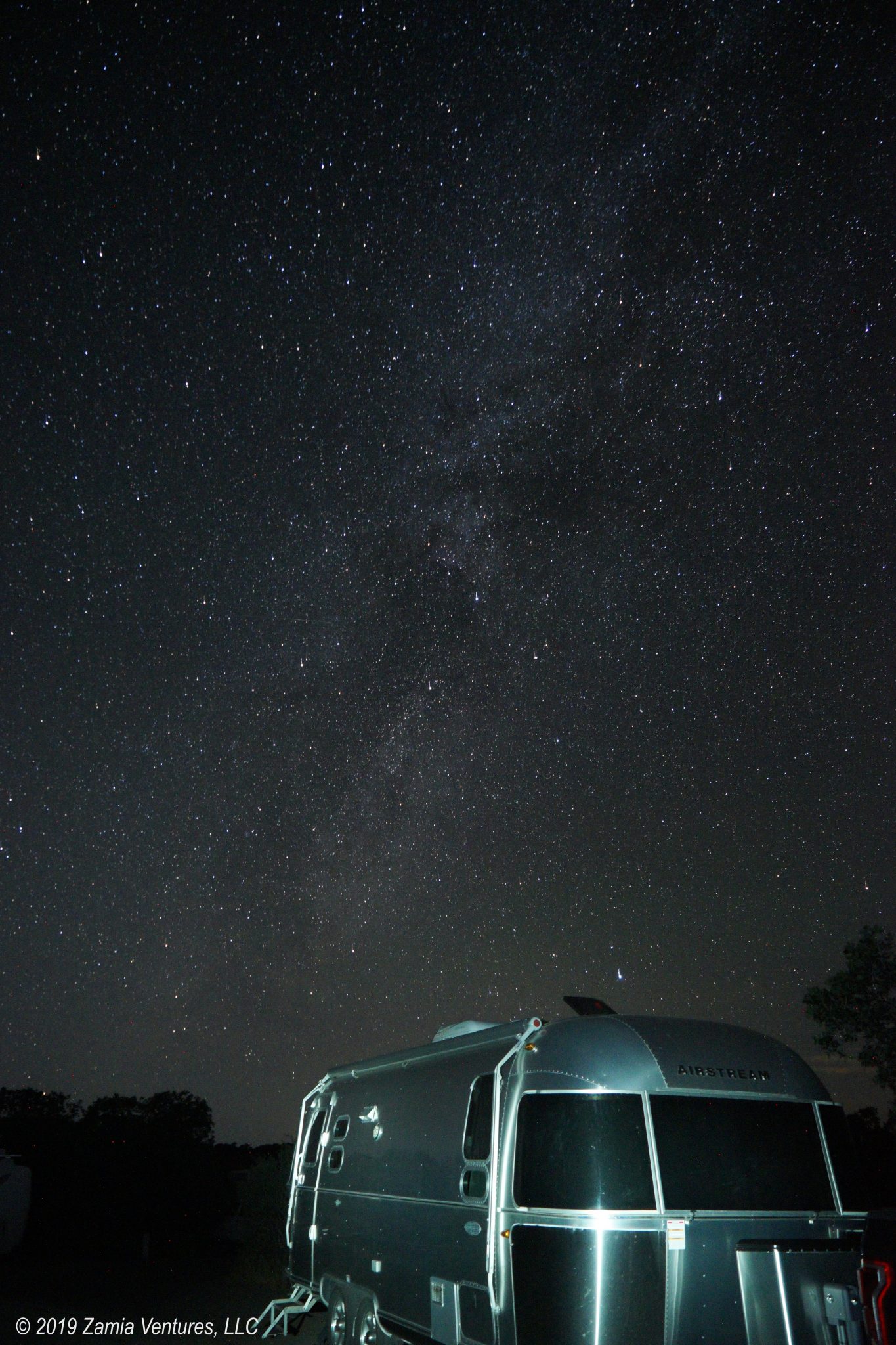
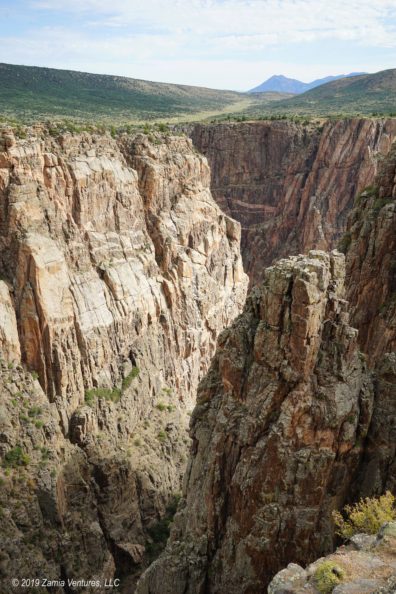
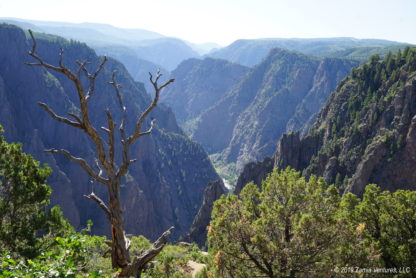
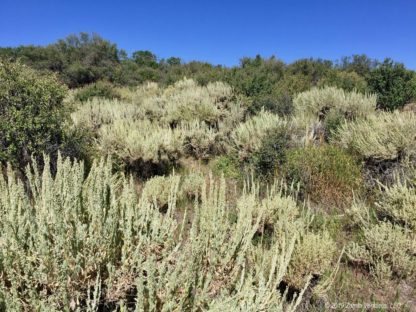
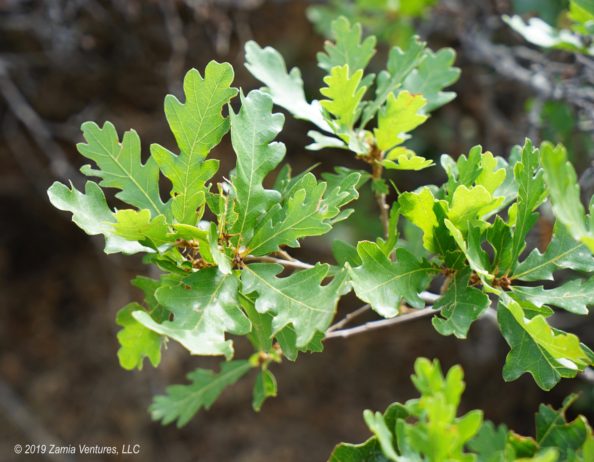
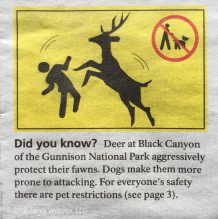
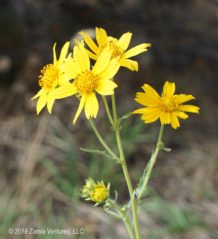
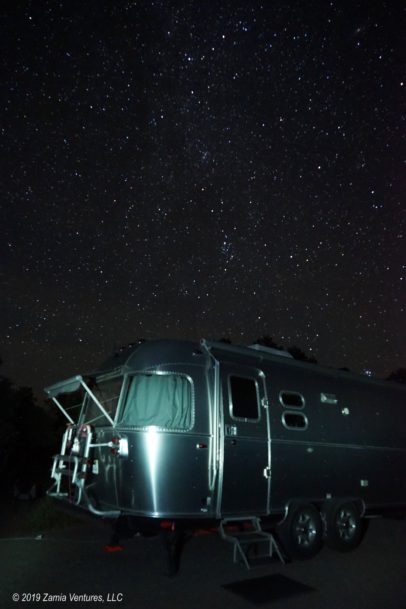
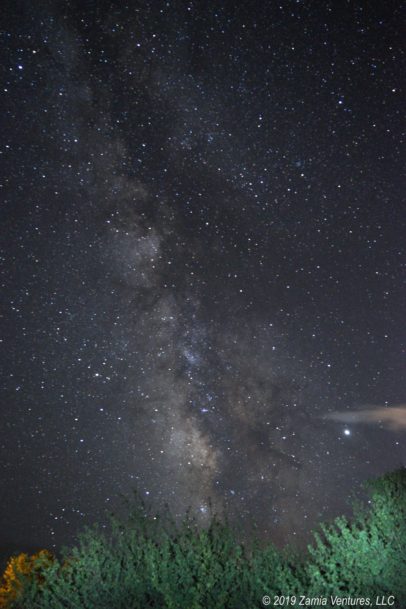

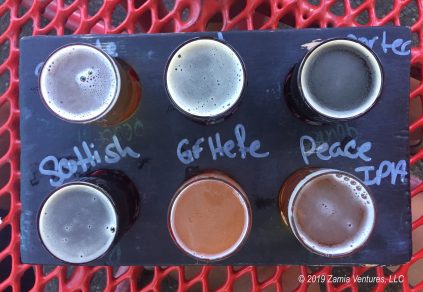

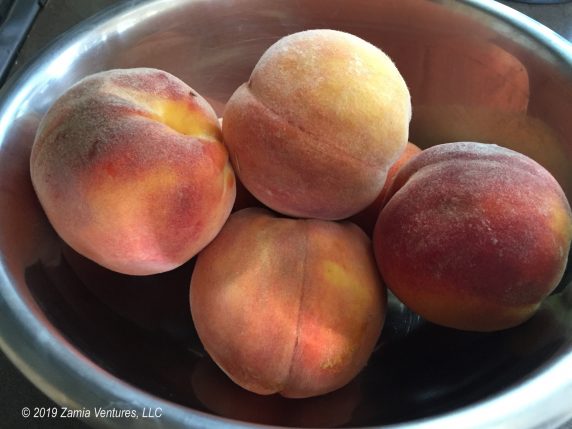

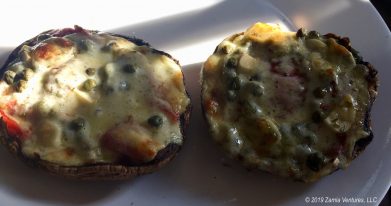
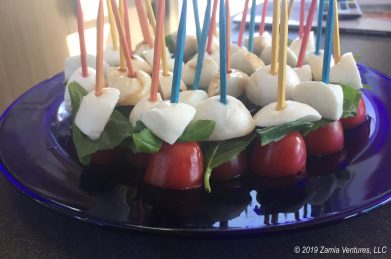

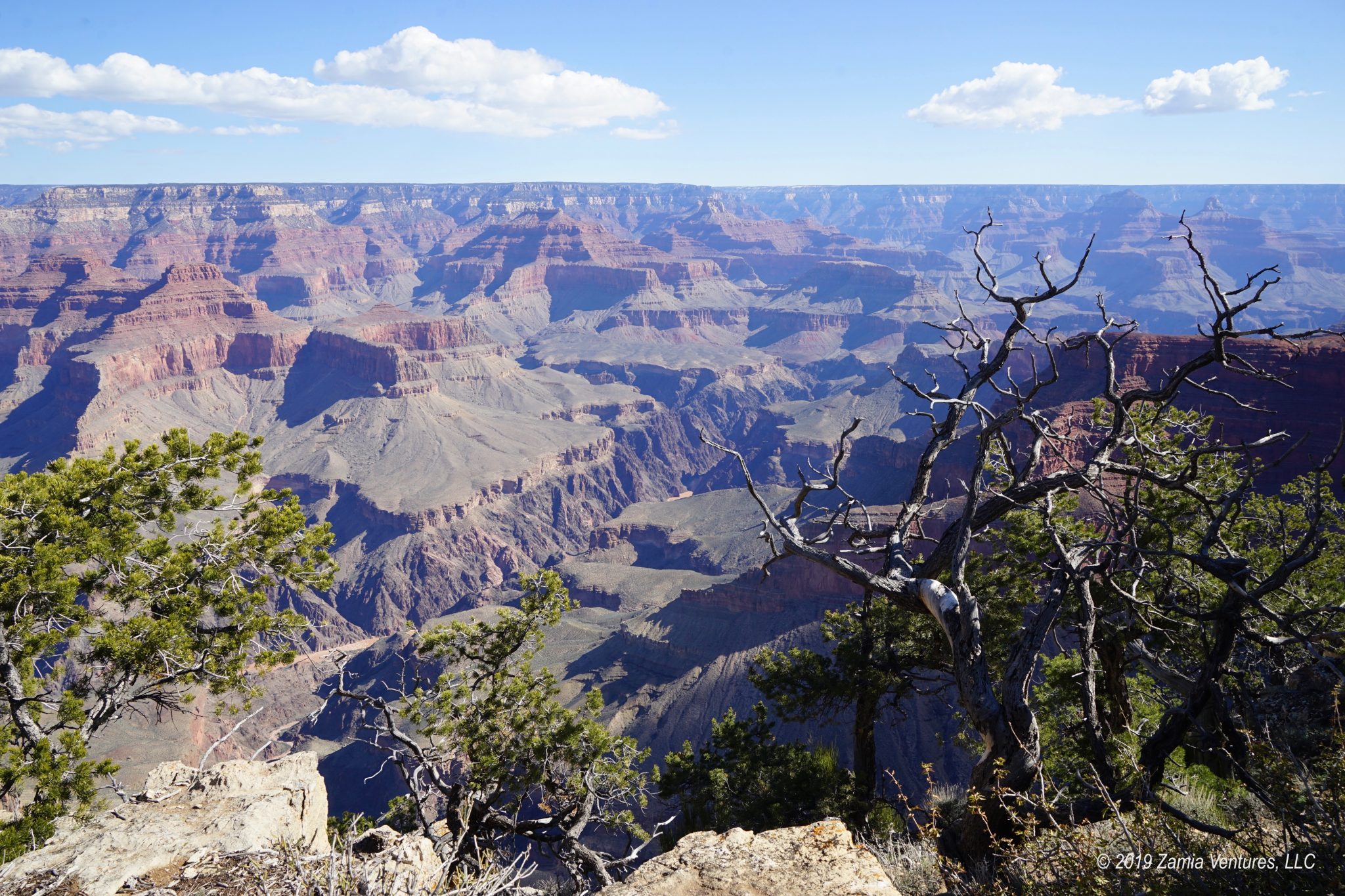
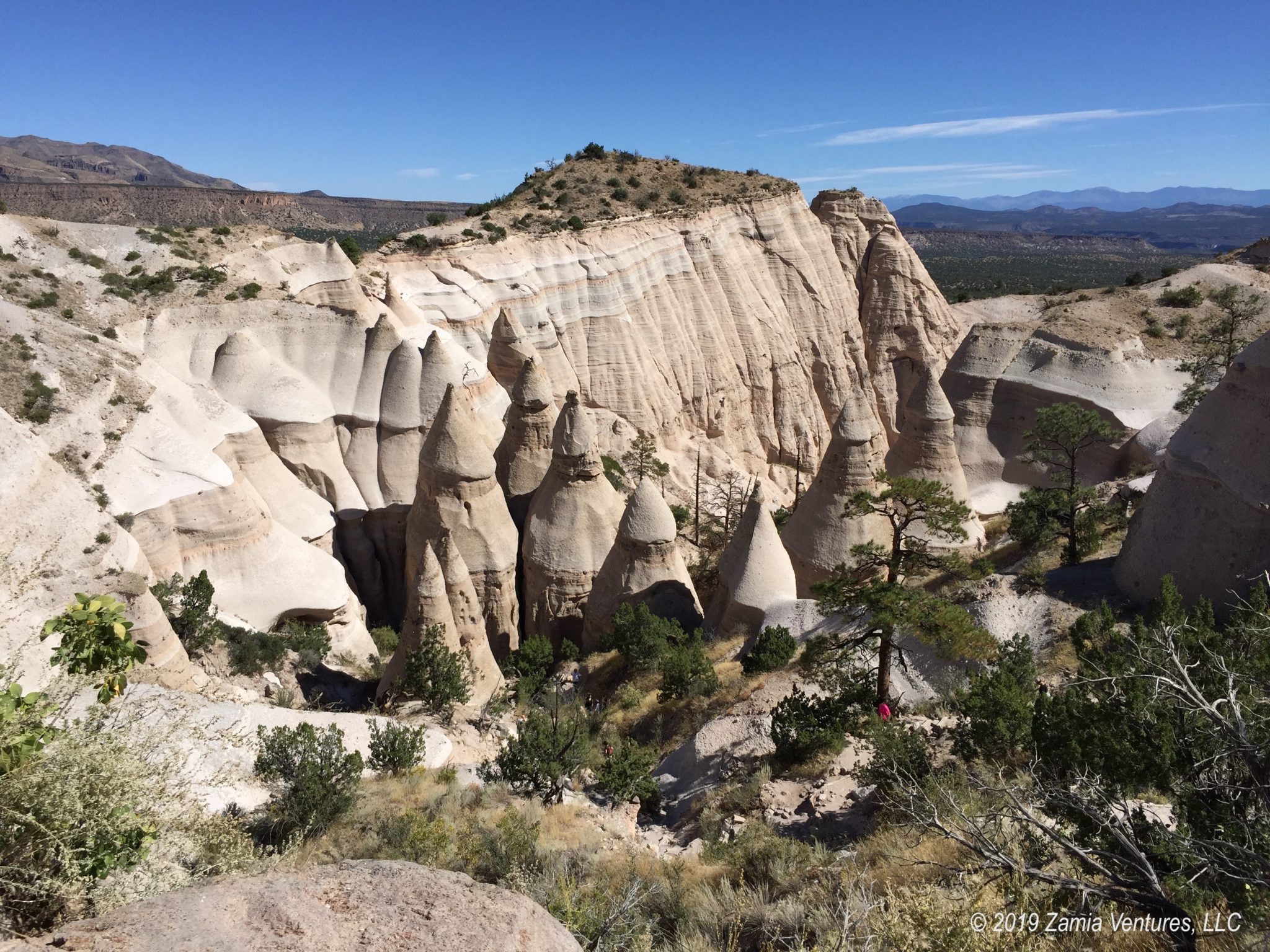
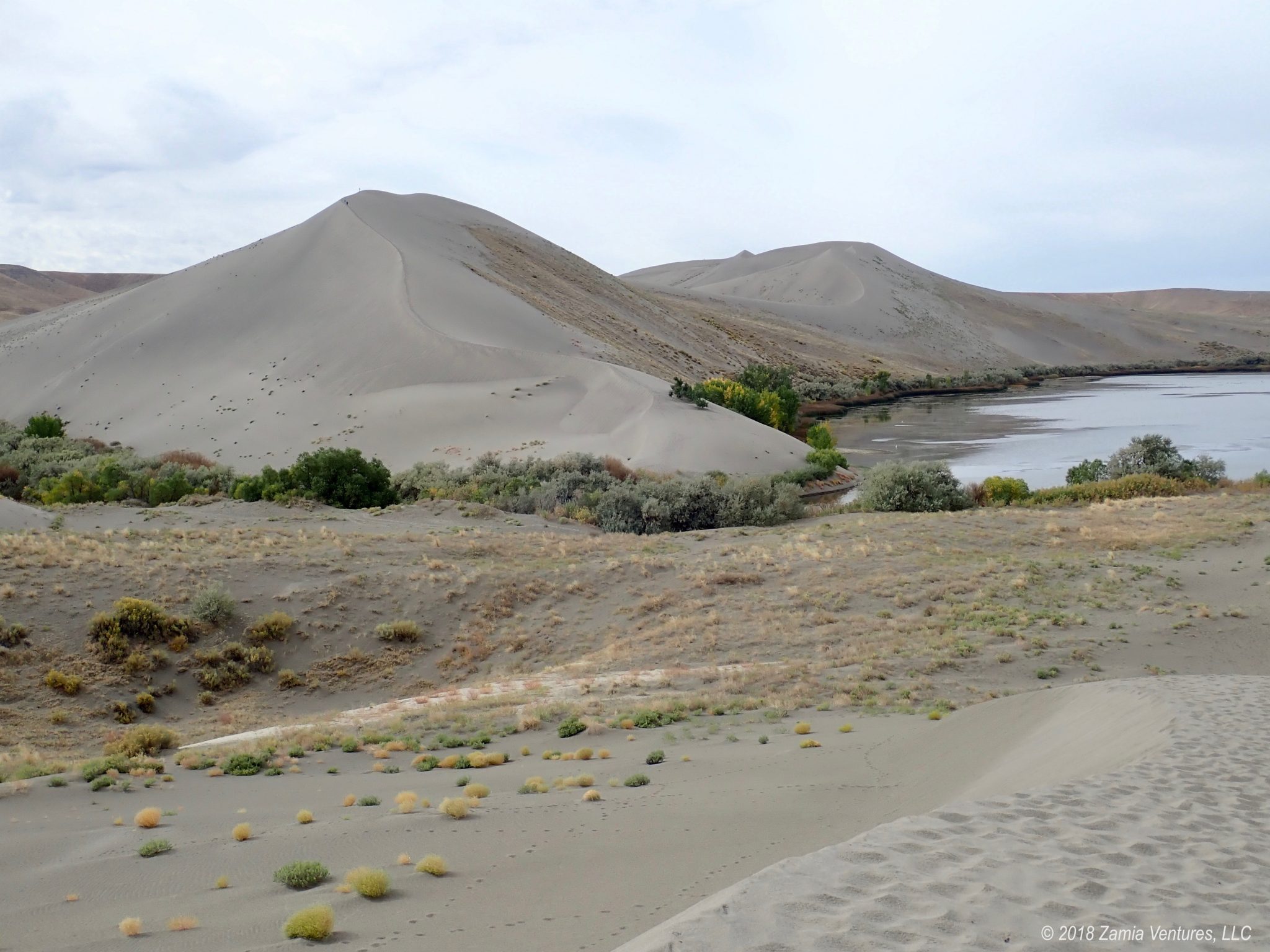
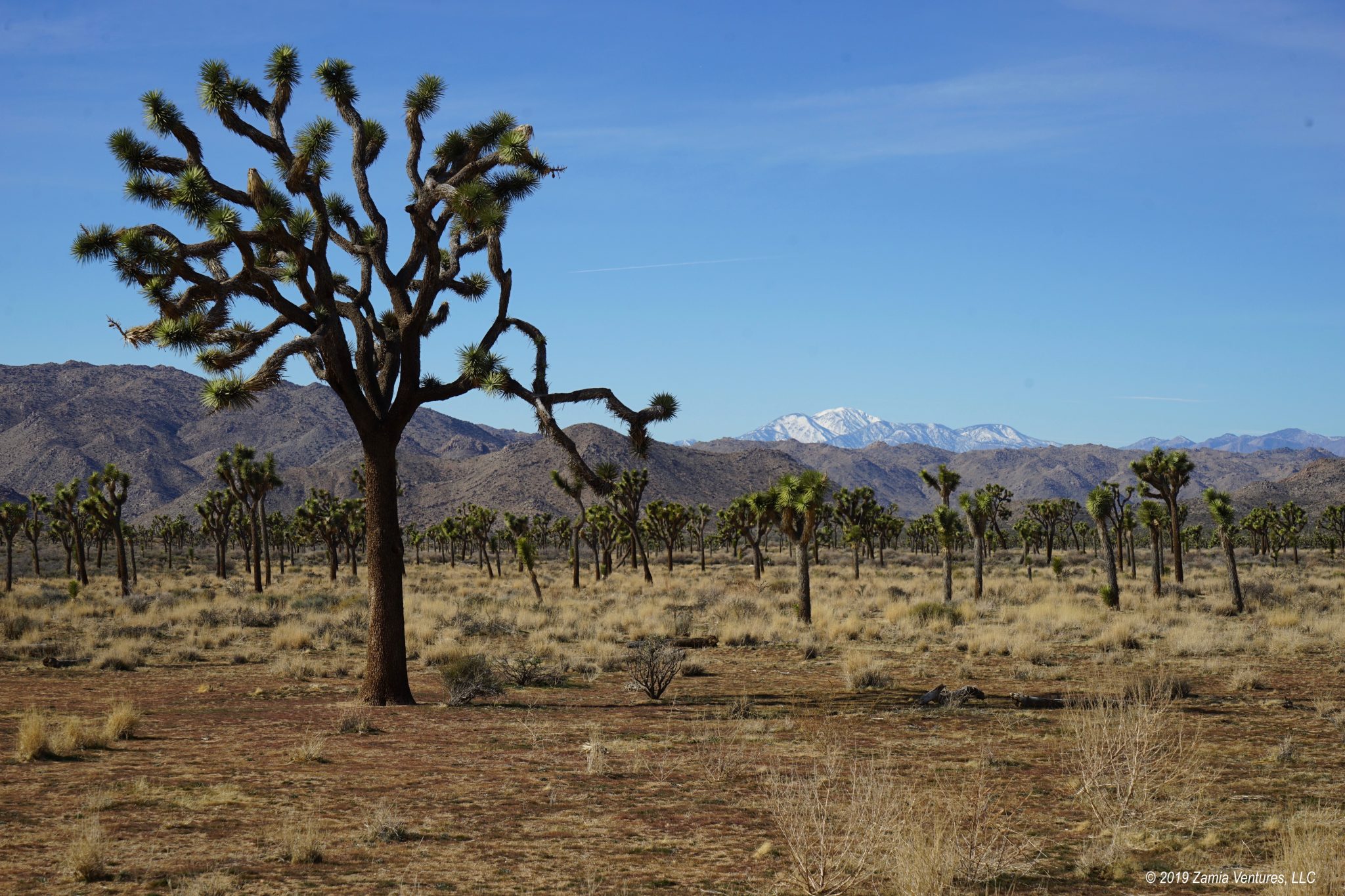
I cannot believe you are learning all these night photography skills in order to NOT post photos of your Airstream against the Milky Way. Have you learned nothing from the Instagram? Sheesh. #missedopportunity
Cool photos of that as well as Black Canyon. That place is tough to photograph. I think we may have done the same “meh” hike you guys did. We weren’t about to descend into the center of the earth, but we wanted to hike a bit and we did that loop Same overall thoughts as you…It was fine, but considering some of the other hikes Colorado has to offer, not so much.
Happy Anniversary to you both! Looks like you had some fantastic dishes to celebrate (especially the carrot ginger soup – yum!).
It’s getting chilly up here too. Time for all of us to start heading south!
Thanks for the compliments on the photos – I agree especially that Black Canyon photos really don’t do the place justice. Also, the trail hiking wasn’t too spectacular, but walking out to the end of Every. Single. Overlook. was surprisingly fun. They revealed many different perspectives on the canyon and I’m really glad we did them all.
I think I mentioned this before, but we will be there next spring driveway surfing at a friend’s whose property backs up to the NPS property. We will avoid that boring hike!
We are old, and don’t go out after dark much (it was weird when we realized that was true!) but we did go out a couple of our last nights at GICL to star-gaze with the crew. My favorite part of dark sky areas is the ability to see meteorites any time you look up at night.
Does the reflection of starlight off your Airstream affect an area’s dark sky rating? 😉
There is virtually no reflection off the Airstream — that’s all an artificial effect I learned thanks to the Night Sky Photography book. In real darkness there is no shape/image from the trailer, but I can make it appear by “light painting” with my headlamp to cast light on the house. For a 30 second exposure, I cast light on the Airstream for about 3-5 seconds, depending on how far away the camera is sitting on the tripod. By not casting light on the neighboring rig, it looks like we are all alone in the campground. It’s an art! Trust me when I say there was a LOT of trial and error involved in this.
Your night photography is stunning! I’ve been threatening for years to learn to photograph night skies but have never done anything about it. Thanks for the inspiration, and the book recommendation. Even though our Arctic Fox won’t look nearly as spiffy as your Airstream in the dark, it will still be fun. And you are SO right—it’s surprisingly hard to pick out familiar constellations when the sky is filled with stars. After an entire summer in the Maritimes (where it’s ALL dark skies) it’s going to be hard to leave.
What a great way to celebrate your anniversary. You guys know how to live well. Here’s to many more years of adventures! 🙂
P.S. Eric misses Jeopardy terribly, LOL.
I’m glad I finally invested some time in working on night photography. It’s something I have wanted to do since we hit the road, but last summer we were up in Montana and it was just so cold at night that I was not very motivated to be outside. Better late than never, I suppose — and better to be in a summer locale with warmer overnight temperatures. I am glad to hear that at least part of the eastern seaboard has decent dark skies, so we will definitely need to make our way up there eventually. Thanks for the anniversary wishes!